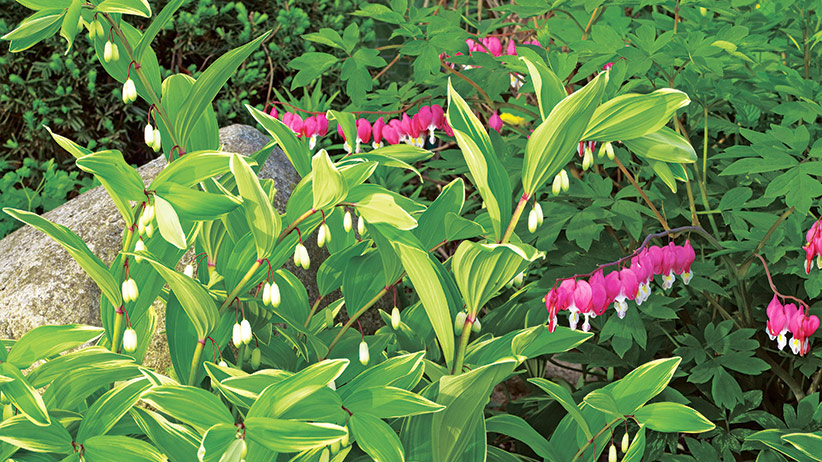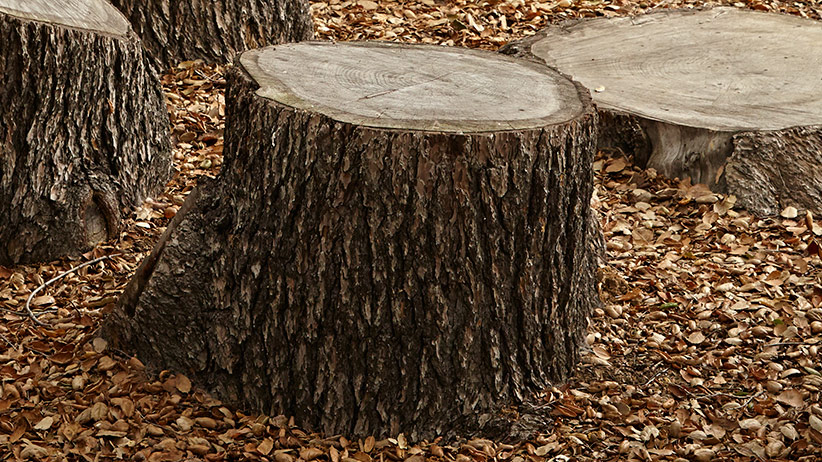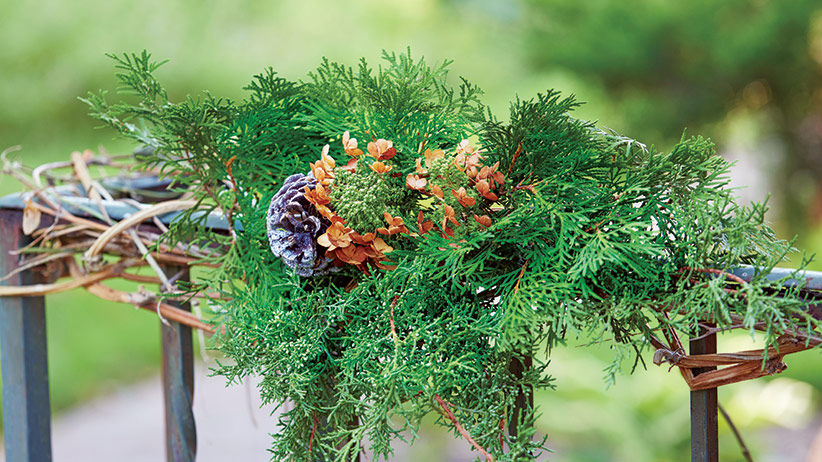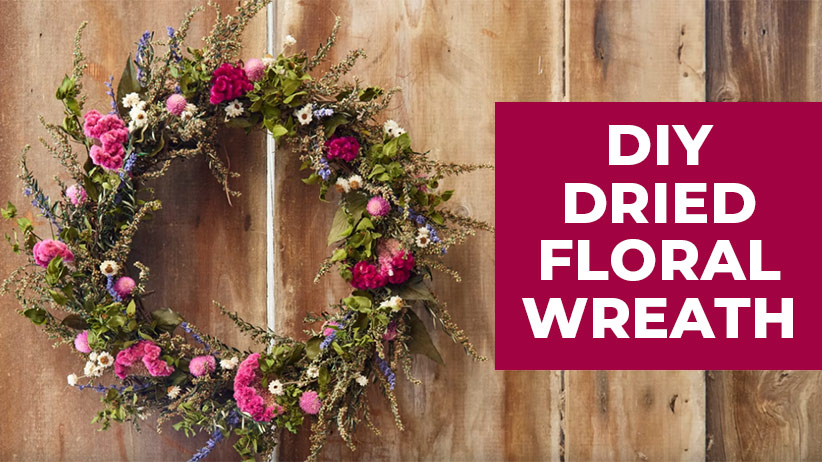Invite native pollinator bees to your garden
Want to make sure your fruit trees produce a bumper crop and you have plenty of tomatoes to share with neighbors? Invite hole-nesting bees to take up residence. There are thousands of species of pollinator bees across North America so there are bound to be some already in your area, but you can also buy dormant bees online. One big threat to bees’ existence is a lack of habitat. You can help them by providing a home similar to the one you can learn about in the video above. But simply building a bee house probably won’t be enough. It helps to learn a bit about what else your guests need before you invite them in.
Beneficial native bees
Solitary hole-nesting bees don’t get as much attention as their hive-dwelling cousins, in part because they aren’t aggressive. They nest alone in abandoned holes and don’t defend these nesting sites, instead going quietly about their work of pollinating. Learn about theses species on Crown Bees’ website.
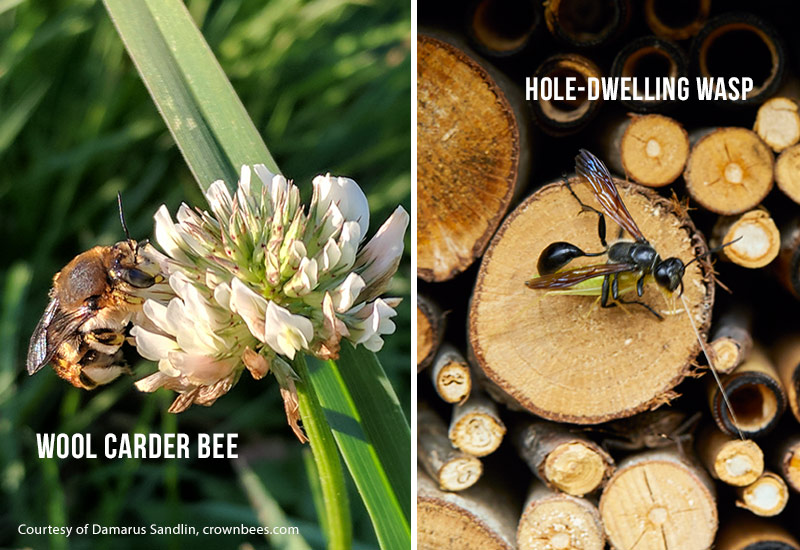
Hole-nesting bees
Different species are active from early spring through summer, each with its own food preferences and techniques for building walls in nesting tunnels. Mason bees, for example, are active in early spring and separate each egg with a mud wall. The wool carder bee in the photo above, at left, flies in summer and lines its tunnel with leaf hairs collected from fuzzy plants, such as lamb’s ear. These bees all have a similar life cycle — they gather food to place in the nesting hole, lay an egg, then build a wall or seal off a cocoon so each newly hatched larva has its own “room” to eat, grow and mature in.
Don’t be alarmed if you also attract a few solitary wasps like the one in the photo, above at right, to the bee house. Hole-dwelling wasps can be found patrolling the garden looking for other insects, such as the tiny leafhopper this one has captured, to feed the larva that will hatch in one of the holes.
You Might Also Like:
Use Flower Shapes to Attract Diverse Pollinators
Blue Flowers are Best for Bees
Pollinator Garden Plan

Start with a diverse garden
A garden with a variety of flowering plants that blooms throughout the growing season is sure to attract insects of all kinds — including hole-nesting bees. You’ll need one square yard of flowers in each season to provide enough pollen for one bee. Big groups of flowers not only look better, but provide an all-you-can-eat buffet for the bees. Flowering trees and shrubs give you a lot of bang for your buck and can be a great source of blooms in small spaces. Avoid pesticides, which are just as deadly to bees as to unwanted insects.
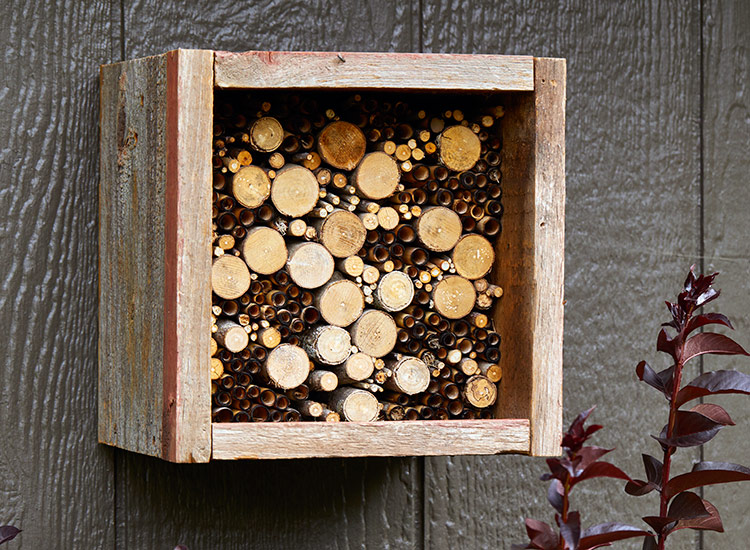
DIY Bee house basics
An average-sized quarter-acre yard will only support about 100 bees. The bee house I made here is a simple 8-inch-square-and-deep box, made of reclaimed barn wood and filled with cardboard tubes, reeds and sticks. The depth allows for a 2-inch overhang that provides protection from the elements. You can use PVC or reclaimed items for the frame, but avoid treated lumber’s harmful chemicals.
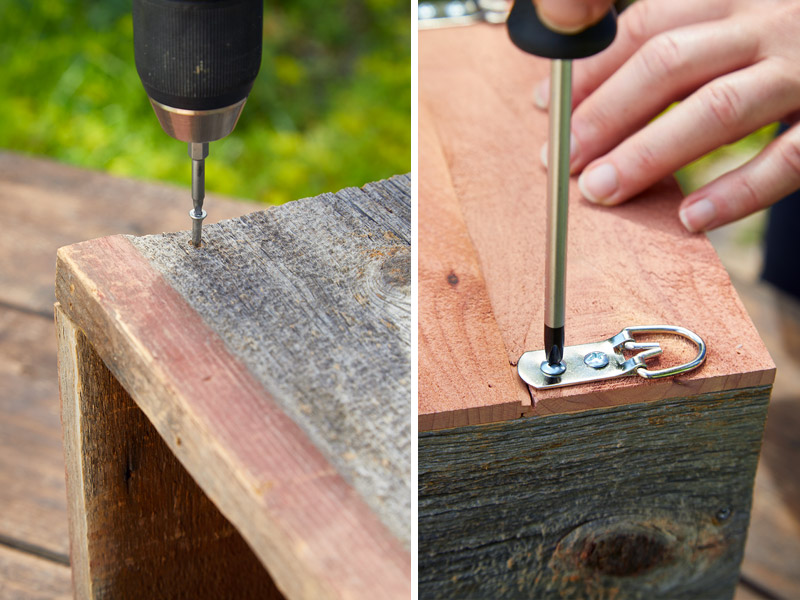
How to construct a bee house
Cut four pieces from a 1×8 board to make the box. This is a reclaimed barn board, but cedar wears well, too. Put them together with a couple of trim screws on each side and attach a back. Then add picture hangers on both sides of the back of the box ensure the house will hang securely.
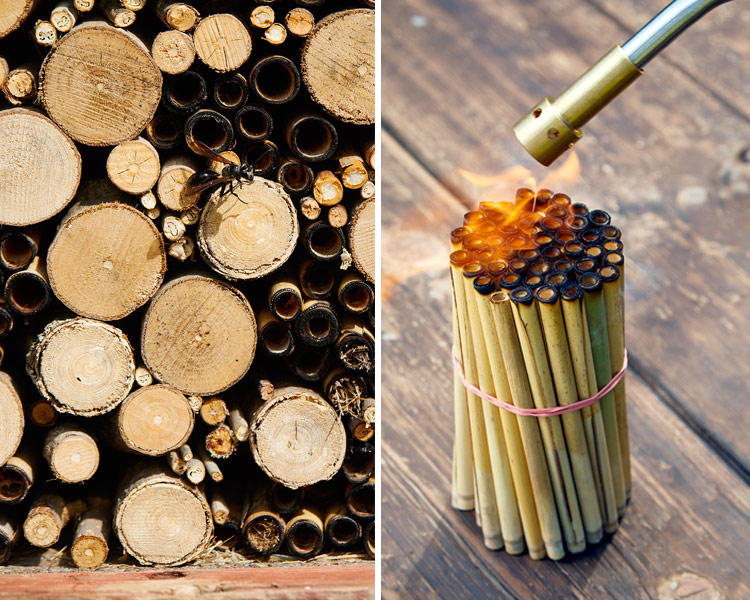
Add nesting tubes
You can find the reeds and cardboard tubes that form the nesting holes from a variety of retail sources, such Crown Bees. Avoid plastic straws and bamboo, which don’t breathe. Diameters from 4 to 10 millimeters will attract a variety of species, but the length of the tube should be 6 to 8 inches long to get the right proportion of male to female bees. There is no need to glue the tubes into the bee house, just pack the tubes, sticks, and other items tightly enough so that they stay in place.
Burnishing nesting tubes
Before you arrange the tubes in the box, use a kitchen torch to burnish the ends of the tubes. This can help signal an attractive nesting site.
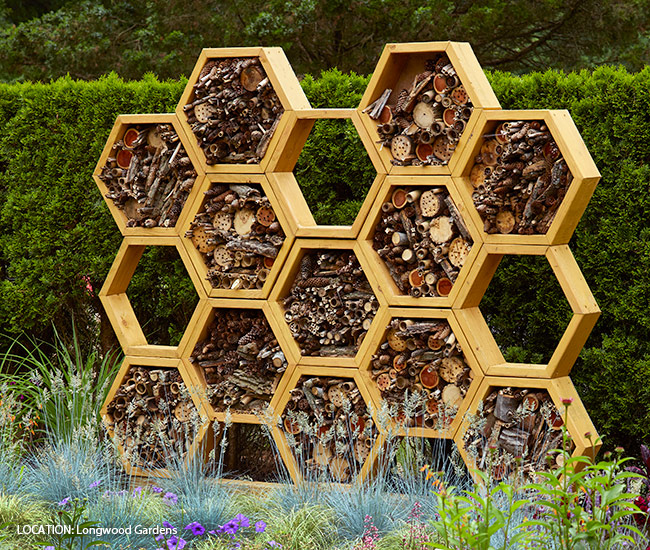
Get creative with your bee house
While 100 tubes may sound like a lot, they didn’t fill this box. Small logs with several 8-inch holes drilled into one end can help fill space while also providing nesting tubes. I mixed in sticks and branches, but you can work in stones, pinecones or even a small ornament. Have fun with the design! You could also make a smaller box without extra elements or leave it only partially filled. If you want to paint your box to dress it up, that’s fine — color won’t deter bees. But remember, these insects are looking for dark, dry holes that are the right diameter.
Put your bee house in the best spot
Choose a spot for your bee house that offers some protection from strong winds and hot sun. Morning sun and afternoon shade helps these cold-blooded insects warm up in the morning and avoid overheating later in the day. Attach the house to a stable object, such as a building or post at least 3 feet off the ground, to make it less accessible to predators. Tree limbs aren’t a good idea — blowing wind can cause the tubes to fall out, and a lot of jostling is hard on larva development.
You Might Also Like:
Butterfly Garden Plan
6 Plants Bees Love
How to Attract More Birds to Your Garden
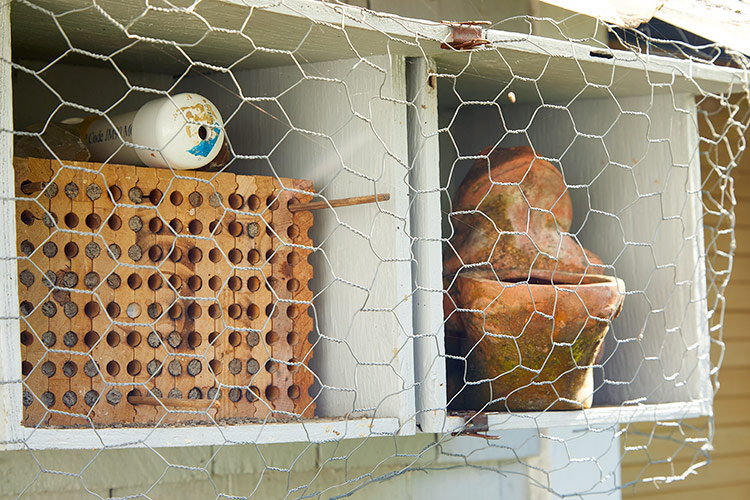
Troubleshooting your bee house
Since these bees don’t usually nest in concentrated areas like this, pests and diseases are more of a problem here than in the wild. Birds, parasitic wasps, mites and the fungal disease chalkbrood are common ones.
If you see birds threatening the house, add a protective “bubble” of 1-inch chicken wire arched 2 to 3 inches out from the tubes to prevent birds from snacking on the larva. Don’t set it flush against the surface or it will get in the way of the bees and won’t keep birds out.
The best way to avoid other insect pests and diseases is to replace the tubes each year with fresh ones. If you find you’re having problems, visit Crown Bees’ website to learn specific troubleshooting techniques.
You can leave the tubes outdoors over winter — that’s what happens in the wild.
You Might Also Like These Products:
Mason Bee Revolution by Dave Hunter
Mason Bee House
Insect Hotel










